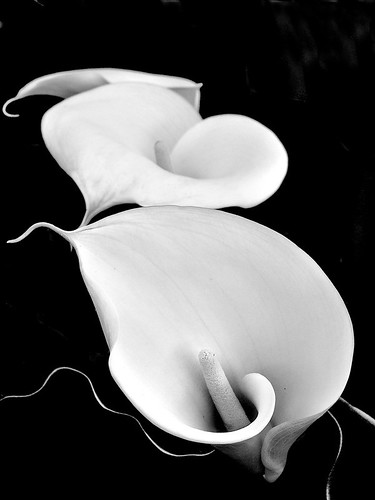Geranium, Red and Bold
Red Geranium, originally uploaded by kathryn45.
There’s something aggressive about geranium. It immense odour intensity and is very tenacious and can easily overpower anything else in the perfume and just take over. When I was at the training week in Grasse, one of the exercises we were given was to guess the raw materials and the proportion of an accord. It was an accord of lavender and geranium oils, and smelled predominantly of geranium. My first guess was that it was a 60-40 ratio (60% geranium). The truth was the complete reverse: there was 30% geranium, and the remaining 70% were lavender. This would have been the case if rose absolute or even rose otto were used. The lavender would have been stronger. Which only goes to shows you how dominant can geranium be!
So what happens when geranium takes over? Whether if its sweet fruity, rosy, or minty notes come through - they becomes so intense, at times even cloying. Some become intensely musky. And this is partially why I shy away from using very much geranium in my compositions. Egyptian geranium is particularly strange and musky, which can be worked to your advantage.
At other times, the geranium can create very strong association of potpourri. In Diptyque’s L’Eau, this is the whole point. Whether or not potpourri smells are to your liking is of course entirely up to you. But the perfumer sure better be aware of the potpourri potential of a note and how to create the desired effect.
But geranium’s aggressiveness can serve you right in some perfumes. It works wonders in orientals, such as in Dioressence, or the bold ambery Anne Pliska, the legendary dense Old Spice; or Noir Epices, which is simultaneously traditional and modern with its mix of dusky dry spices and dark musk and illuminated with geranium, jasmine and sweet orange. The upfront, bold geranium note is also used to balance the over-the-top white florals in Fracas, headed by tuberose, and also in cutting edge leathers that have become classics – Knize Ten, Impreial Leather, and others. Geranium is also paired with musky vetiver and warm cinnamon and sweet orange in Aveda Personal Blends Key Element #3 Fire Nature (which I love, by the way).
In my Zodiac collection, there is geranium in two perfumes: Taurus, where it takes a second-violin role to support the rose heart, contrasted by patchouli; and Aries, where geranium’s firey-red boldness is set against a backdrop of tobacco and musk overlaid with hot spices – cinnamon, black pepper and cloves and the exotic, diffusive warmth of zantoxylum (Tomar seeds). I just recently revamped Aries and got rid of the lime top notes, I found that they got in the way of the musk and geranium creating a fresh-green distraction from what Aries is all about. Now it’s musky notes are more pronounced with a touch of cascarilla, ambrette, opoponax and bourbon vetiver.








